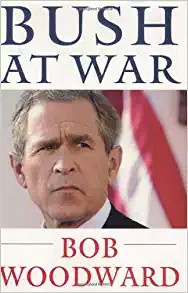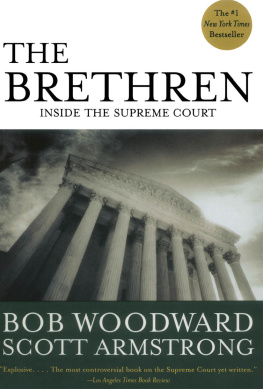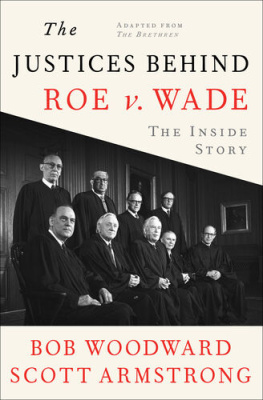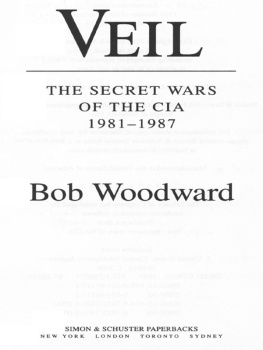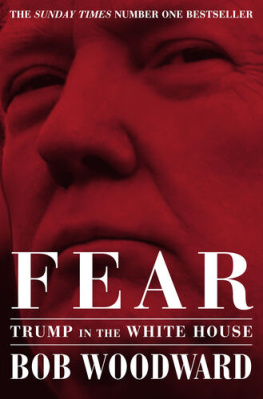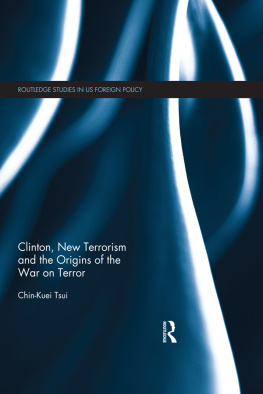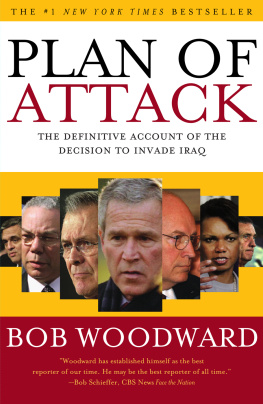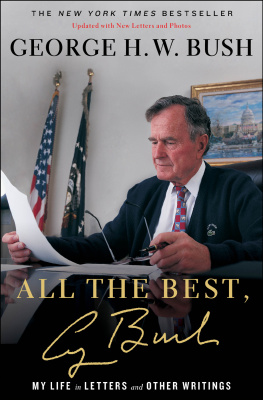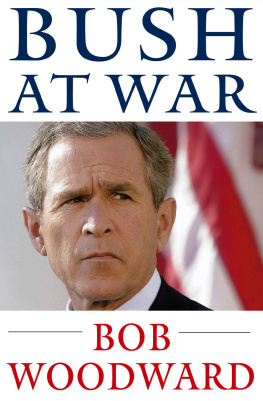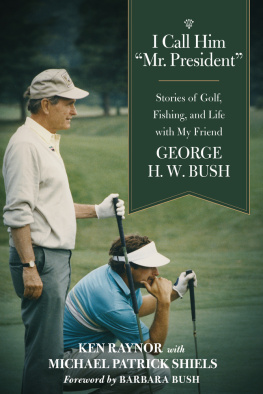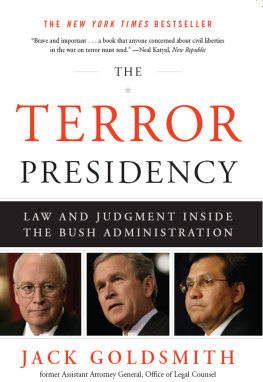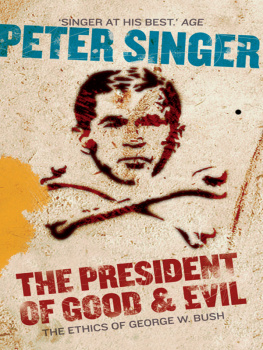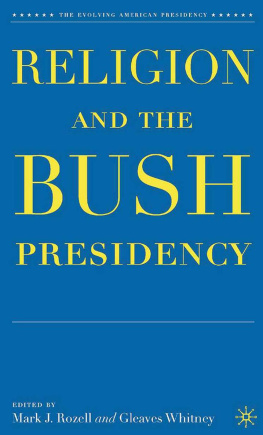BUSH AT WAR
SIMON & SCHUSTER
Bob Woodward
v. I NEW YORK LONDON TORONTO - SYDNEY SINGAPORE
SIMON & SCHUSTER Rockefeller Center 1230 Avenue of the Americas New York, NY 10020
Copyright 2002 by Bob Woodward All rights reserved, including the right of reproduction in whole or in part in any form.
Map on page xv copyright The Washington Post, Richard Furno.
SIMON & SCHUSTER and colophon are registered trademarks of Simon & Schuster, Inc.
For information regarding special discounts for bulk purchases, please contact Simon & Schuster Special Sales at 1-800-456-6798 or business@simonandschuster.com
Designed by Paul Dippolito
Manufactured in the United States of America
10 987654321
Library of Congress Cataloging-in-Publication Data is available.
ISBN 0-7432-0473-5
Photography credits appear on page 377.
AUTHOR'S NOTE
Mark Malseed, a 1997 Phi Beta Kappa architecture graduate of Lehigh University, assisted me full-time in the reporting, writing, editing, research - and thinking - for this book. He is one of the brightest, calmest, most remarkable young men I have ever encountered or worked with. He began as my assistant in May 2002, and in just six months mastered the subjects of Bush, his war cabinet, their debates and strategies. Well-read and meticulous, Mark always had superb ideas for improving the structure, substance and language of this story. He has a natural sense of order and was able to juggle a half-dozen tasks and persevere through 12-hour days with grace. He is tough-minded but scrupulously fair. I found I could trust him without question. Every day working with Mark was a joy, and I treasure our friendship. This book is a collaboration - his as much as mine.
To Donald E. Graham, who so brilliantly carries on the legacy of his mother, Katharine Graham: hands off, mind on - a spirit of unfettered, independent inquiry and a willingness to listen
A NOTE TO READERS
This is an account of President George W. Bush at war during the first 100 days after the September 11, 2001, terrorist attacks.
The information I obtained for this book includes contemporaneous notes taken during more than 50 National Security Council and other meetings where the most important decisions were discussed and made. Many direct quotations of the president and the war cabinet members come from these notes. Other personal notes, memos, calendars, written internal chronologies, transcripts and other documents also were the basis for direct quotations and other parts of this story.
In addition, I interviewed more than 100 people involved in the decision making and execution of the war, including President Bush, key war cabinet members, the White House staff, and officials currently serving at various levels of the Defense and State Departments and the CIA. Most sources were interviewed multiple times, several a half-dozen or more times. Most of the interviews were conducted on background - meaning that I could use the information but the sources would not be identified by name in this book. Nearly all allowed me to tape-record our interviews, so the story could be told more fully and with the exact language they used.
I have attributed thoughts, conclusions and feelings to the participants. These come either from the person himself, a colleague with direct knowledge of them, or the written record - both classified and unclassified.
President Bush was interviewed on the record twice - once for 90 minutes by myself and Dan Balz, a colleague at The Washington Post, for a lengthy eight-part series, "Ten Days in September," which was published in the Post in early 2002.1 have drawn on that interview and the series for a portion of this book. I interviewed President Bush a second time on August 20, 2002, at his ranch in Crawford, Texas, for two hours and 25 minutes. The transcript shows that I asked questions or made short comments 300 times. The president gave specific answers, often very detailed, about his reactions and reasoning behind the main decisions and turning points in the war.
War planning and war making involve secret information. I have used a good deal of it, trying to provide new specific details without harming sensitive operations or relationships with foreign governments. This is not a sanitized version, and the censors, if we had them in the United States - thank God we don't - would no doubt draw the line at a different, more restrictive place than I have.
This book contains a voluminous amount of new, documented information which I was able to obtain while memories were freshest and notes could be deciphered. It is an inside account, largely the story as the insiders saw it, heard it and lived it. Since it covers events and secret deliberations that began just over a year ago, it is an early version. But I was able to test the information I had for accuracy and context with trusted sources I have known for years and in some cases decades. Criticism, the judgments of history and other information may, over the coming months and years, alter the historical understanding of this era. This is my effort to get the best obtainable version of the truth.
In 1991, I published a book called The Commanders which was about the 1989 invasion of Panama and the lead-up to the Gulf War during the presidency of Bush's father, President George H.W. Bush.
"The decision to go to war is one that defines a nation, both to the world and, perhaps more importantly, to itself," I wrote at the beginning of that book. "There is no more serious business for a national government, no more accurate measure of national leadership." That is truer today than perhaps ever.
Bob Woodward October 11,2002 Washington, D.C.
CAST OF CHARACTERS
THE PRESIDENT OF THE UNITED STATES George W. Bush
THE PRINCIPALS
Vice President of the United States Dick Cheney
Secretary of State Colin L. Powell
Secretary of Defense Donald H. Rumsfeld
Assistant to the President for National Security Affairs Condoleezza Rice
Director of the Central Intelligence Agency George J. Tenet
Chairman of the Joint Chiefs of Staff General Richard B. Myers, United States Air Force
White House Chief of Staff Andrew H. Card Jr.
THE DEPUTIES
Chief of Staff to the Vice President I. Lewis "Scooter" Libby /"
Deputy Secretary of State Richard L. Armitage
Deputy Secretary of Defense Paul D. Wolfowitz
Deputy Assistant to the President for National Security Affairs
Stephen J. Hadley
Deputy Director of the Central Intelligence Agency John E. McLaughlin
Vice Chairman of the Joint Chiefs of Staff General Peter Pace, United States Marine Corps
OTHER KEY ADVISERS
Commander in Chief, U.S. Central Command General Tommy Franks, United States Army
Attorney General of the United States John D. Ashcroft
Director of the Federal Bureau of Investigation Robert S. Mueller III
Counselor to the President Karen P. Hughes
Senior Adviser to the President Karl Rove
White House Press Secretary Ari Fleischer
THE CENTRAL INTELLIGENCE AGENCY
Deputy Director for Operations James L. Pavitt
Director of the Counterterrorism Center Gofer Black
Chief of Counterterrorist Special Operations Hank '
Jawbreaker Team Leader Gary
THE NORTHERN ALLIANCE
Lead Commander Mohammed Fahim
Commander of Forces in Northern Afghanistan Abdurrashid Dostum
Commander of Forces in Northern Afghanistan Attah Mohammad
Commander of Forces in Central Afghanistan Karim Khalili
Commander of Forces in Western Afghanistan Ismail Khan
Foreign Minister Abdullah Abdullah
Chief of Security Engineer Muhammed Arif Sawari
INTERIM LEADER OF AFGHANISTAN Hamid Karzai
BUSH AT WAR
TUESDAY, SEPTEMBER 11, 2001, began as one of those spectacular pre-fall days on the East Coast, sunny, temperatures in the 70s, light winds, the sky a vivid light blue. With President George W. Bush traveling in Florida that morning promoting his education agenda, his intelligence chief, CIA Director George J. Tenet, didn't have to observe the 8 A.M. ritual of personally briefing the president at the White House on the latest and most important top secret information flowing into America's vast spy empire.
Next page
